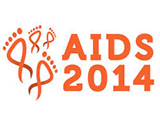 The demand for HIV treatment in low- and middle-income nations is projected to rise to 16.8 million people by the close of 2016, aidsmap reports. The ARV Forecasting Technical Working Group presented findings from a study projecting the upswing in treatment demand at the 20th International AIDS Conference (AIDS 2014) in Melbourne, Australia.
The demand for HIV treatment in low- and middle-income nations is projected to rise to 16.8 million people by the close of 2016, aidsmap reports. The ARV Forecasting Technical Working Group presented findings from a study projecting the upswing in treatment demand at the 20th International AIDS Conference (AIDS 2014) in Melbourne, Australia.
The study, which defined treatment eligibility as 80 percent of those eligible under the 2013 treatment guidelines, projected that the demand for antiretrovirals (ARVs) will rise from 11.5 million people at the end of 2013 to 15 million people by the close of 2015, then to 16.8 million people by the end of 2016.
The study projects that the market share for Viread (tenofovir) will rise from 50 percent in 2013 to 62 percent in 2016, while Retrovir (zidovudine) will see its share drop from 40 percent to 34 percent and Zerit’s (stavudine) market share will decline from 8 percent to 2 percent. Meanwhile, Sustiva (efavirenz) should see its market share increase from 48 percent in 2013 to 63 percent, while Viramune (nevirapine) will lose market share over time. The use of second-line ARVs will increase from 4.4 percent of all HIV meds to 5.0 percent in 2016. There was not enough information to make a projection about how the market share of third-line therapies may change.
To read the aidsmap story, click here.
To read the conference abstract about the upswing in demand, click here.
To read the abstract about cost implications, click here.
Advertisement
Advertisement
Advertisement






Comments
Comments